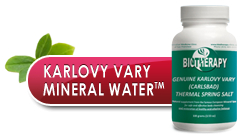You underwent gallbladder surgery (cholecystectomy), probably because you had pain under your ribs in the right upper area of your stomach. You were told that laparoscopic operation is ambulatory daily procedure, relatively simple, less invasive, more cosmetically acceptable operation while providing a minor surgical risk. This is right. In Latin “cholecyst” means gallbladder, “ectomy” means removal and it is now one of the most common surgery performed in the U.S. Over 700,000 such operations are performed annually.
You were told that the gallbladder is only as a storage container for bile and it is not a vital organ and that every person can live without it. You were told that after gallbladder surgery, pain would stop, and you would not have the digestive discomfort. This is not entirely correct because, according to recent medical studies, cholecystectomy does not reduce gallbladder pain in 10% to 33% of people and the medical literature demonstrates that nearly 20% of people without gallbladders maintain the symptoms such as gas, bloating, heartburn, abdominal pain and cramps, diarrhea, constipation, fatty food intolerance, etc. Symptoms after cholecystectomy may stay for several months, or even years. The medical term for this condition is postcholecystectomy syndrome.
The possibility of these enduring symptoms after surgery does not depend on the experience and talent of the surgeon or the quality of the medical equipment used. By the way, these are outstanding in most cases. Pain and indigestion often persist even after the proper removal of the gallbladder. Understanding the role of both the gallbladder and bile can give us a clue about what needs to be done to reduce the symptoms after gallbladder surgery.
The liver produces bile, a thick, bitter fluid, in a network of ducts, which transport the bile into the duodenum (first part of the small intestine). The common bile duct merges into the pancreatic duct, which releases pancreatic juices. The mixture of bile and the pancreatic juices go through the muscle valve that controls releasing of these fluids from the liver, gallbladder, and pancreas into the small intestine. The name of this strategic valve is the Sphincter of Oddi.
When the gallbladder squeezes out bile, the Sphincter of Oddi opens. When this sphincter closes, bile from the liver is redirected into the gallbladder that then gets bigger like a balloon. Therefore, the gallbladder has a buffer function to prevent the rising pressure inside the bile ducts. Nervous branches, which surround the gallbladder and digestive hormones, regulate this extraordinarily complicated team-work. After surgery, both the buffer function and the proper regulation of the sphincter of Oddi are lost. Almost 20 percent of persons after cholecystectomy may suffer from the sphincter of Oddi dysfunction. Spasm of this valve causes high pressure in the bile duct resulting in pain and enlargement of bile ducts.
Normally, bile travels from the liver into the gallbladder. There, bile is concentrated for digesting fats. Bile is made up of water, minerals, bicarbonate, soluble bile acids, cholesterol, bile pigments, and lecithin. Besides, human being gets rid of through bile the various fat-soluble toxic substances, such as poisonous chemicals, alcohol byproducts, heavy metals, poisonous chemicals, medications, etc.
Bile is an alkaline fluid with a pH in the 7.0-8.0 range. Preserving this range is significant because acidic changes and lowering pH create the precipitation of the insoluble, terribly aggressive bile acids. These extremely corroded and irritated substances, as concentrated detergents, cause gallbladder inflammation and producing the gallbladder stones. This is an extremely important issue. Concentrated, aggressive acidic bile accumulated in the gallbladder is the cause of almost all gallbladder problems. The gallbladder is where the initial damage starts. After gallbladder surgery, the aggressive, acidic liver bile initiates injury of the bile ducts, sphincter of Oddi, pancreatic duct, and the duodenum causing inflammation, pain, spasms, and even ulcers.
Sphincter of Oddi dysfunction leads to spasm of this valve. Then, aggressive, acidic liver bile irritates the bile and pancreatic ducts. Sequentially, it can cause pain and burning sensations in the upper right or left stomach area. In the case of Sphincter of Oddi dysfunction, this muscle valve can open at the wrong phase when there is no food in the duodenum. At the moment, aggressive, acidic, liver bile corrodes, burns the abdominal walls. Jerky, spasmodic contractions of the duodenal walls regurgitate the aggressive bile acids in the stomach and or even into the esophagus causing constant heartburn, stomach inflammation; gastritis, ulcers, and finally cancer. When acidic liver bile with aggressive, insoluble bile acids travels down through the intestines, they can cause chronic diarrhea and raise the risk of colorectal cancer.
Once the bile becomes acidic, it loses its natural capability to aid digestion of fats, which can lead to the fatty foods intolerance and a lack of essential fatty acids and fat-soluble vitamins. It can cause people without gallbladders to feel uncomfortable symptoms, which is very far from stomach area: fatigue, brittle nails and bones, low memory, dry skin, night blindness, low immunity, muscle pain, etc.
Another condition that can happen after gallbladder surgery is dysbiosis (Candida-yeast overgrowth, Small Intestine Bacterial Overgrowth; SIBO). The unhealthy eating habits and lifestyle choices that led the patient to the gallbladder surgery often persist after gallbladder surgery, as well. Sugars, fried and processed foods, alcohol coupled with the environmental chemicals, sedentary life style, and some medications harmfully affect intestinal bacteria. Friendly intestinal flora controls the growth of yeast, harmful bacteria, and parasites. Overgrowth of Candida-yeast can cause damage in the digestive, nervous, and hormonal systems and neuropathic pain in the internal organs and muscles.
There are various reasons for the pain resulting after gallbladder removal. There is no magic bullet for this pain and taking painkillers is just symptomatic treatments. By the way, in the long run can aggravate abdominal pain. Holistic, natural approach with a focus on the root of the problems is the key to reduce these problems and avoid deterioration. Natural, non-drug treatment for pain after gallbladder surgery has to be complex and can include various alternative healing methods. Some of them are:
- Customized healing diet
- Drinking healing mineral water prepared from genuine Karlovy Vary thermal spring salt
- Herbal and nutritional supplementation
- Acupuncture – European whole body cleansing with colon hydrotherapy – Restoration of the friendly intestinal flora – Abdominal massage – Relaxation, medical hypnosis, custom hypnosis CD, and more
This natural treatment makes liver bile alkaline and liquid. It also can help with the sphincter of Oddi dysfunction; spasms or looseness of the sphincter of Oddi, irritation of the bile ducts and bile reflux. Alkalinity of bile and pancreatic juices promotes proper digestion and lessens pain. It can restore the balance between beneficial bacteria and opportunistic infection (yeast, harmful bacteria, and parasites), can reduce cramps pain, heartburn, and diarrhea.
Surgery to remove the gallbladder has been a widespread procedure since the 19th century. During that time, European doctors have used therapeutic diets, herbs, abdominal massage, and healing mineral water for treatment of the complications after gallbladder removal surgery. Drinking healing mineral water has been very popular in Europe by patients after gallbladder removal. The most well-known is mineral water from the thermal spring from the small Czech town Karlovy Vary. European doctors recommended drinking the healing mineral water either from the thermal spring or preparing it at home from genuine Karlovy Vary thermal spring salt. The genuine Karlovy Vary thermal spring salt is now available is Biotherapy Clinic.
Medical research supports the therapeutic action of the Karlovy Vary healing mineral water. European doctors proved that drinking this healing mineral water is valuable for numerous liver, pancreatic, and intestinal disorders. It alkalinizes the body’s fluids, improves digestion, makes bile less aggressive, and, thus, alleviates abdominal pain, spasms, diarrhea, and heartburn.
Acupuncture is one more non-drug, alternative method of treating complications after gallbladder surgery. Not many people know that acupuncture can be very helpful in digestive disorders, abdominal pain, constipation and/or chronic diarrhea. Numerous medical articles from countries where acupuncture is widely used and personal experience the practitioners of the Biotherapy Clinic confirm that acupuncture can reduce pain in the postcholecystectomy syndrome.
In the Biotherapy Clinic, we have unique herbal formulations and nutritional supplements such as minerals, trace elements, probiotics, vitamins, enzymes, amino acids to reduce the pain and improve digestion.
All abdominal surgeries initiate adhesions that restrict movement of the abdominal organs. Gentle, professional, abdominal massage can reduce the pain, spasms and open blocked passages.
So, you have had gallbladder surgery – your gallbladder is gone. Now is the time for education how to improve health and eat healthier. Following the suggestions above can help you to alleviate the side effects of gallbladder removal.
Finally, the postcholecystectomy syndrome can manifest even in the many years after surgery and it is not easy to diagnose and treat. Thus, safe and effective, natural, non-drug methods of alternative medicine can be used alone or in combination with conventional medicine to reduce pain and indigestion. Self-treatment is risky; the goal is to find a knowledgeable, licensed practitioner.

